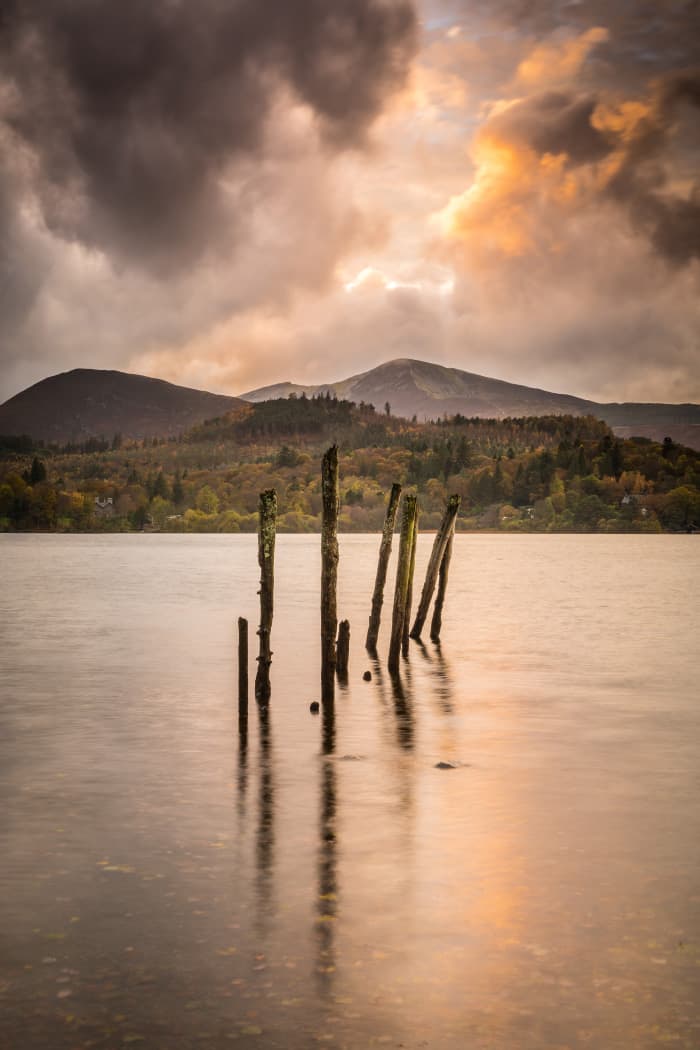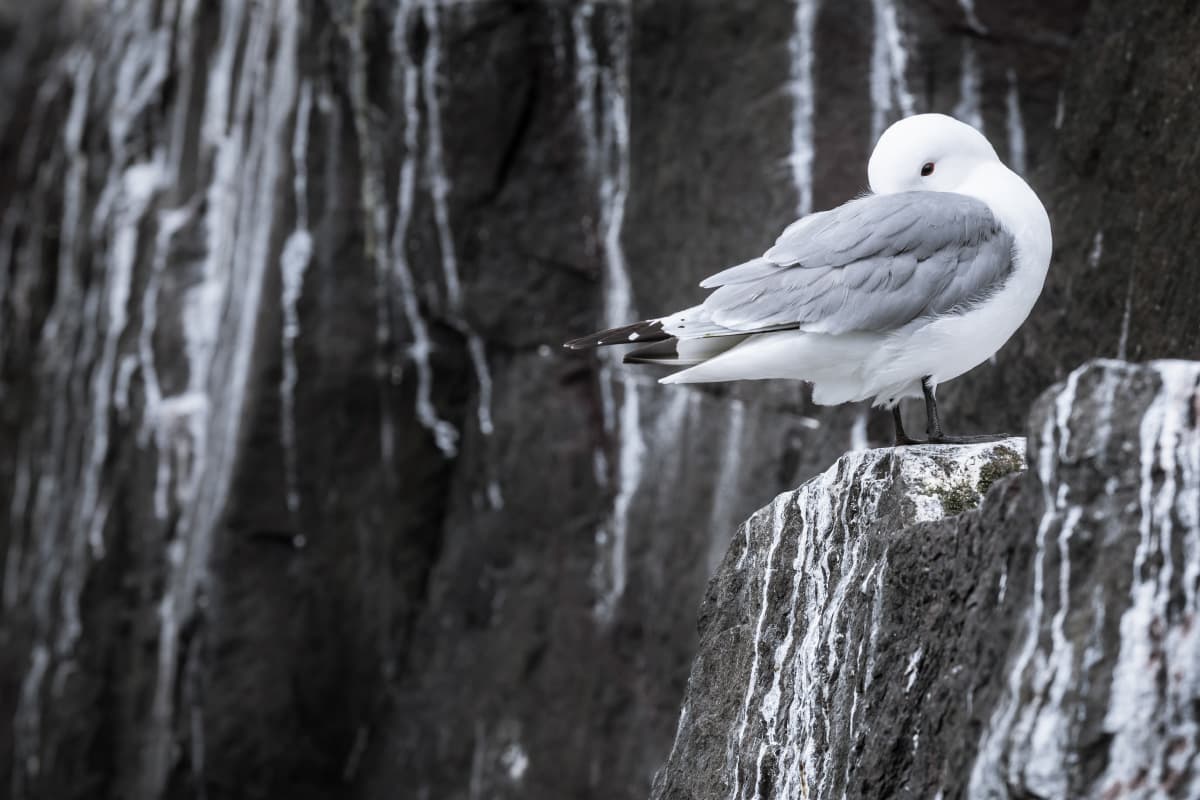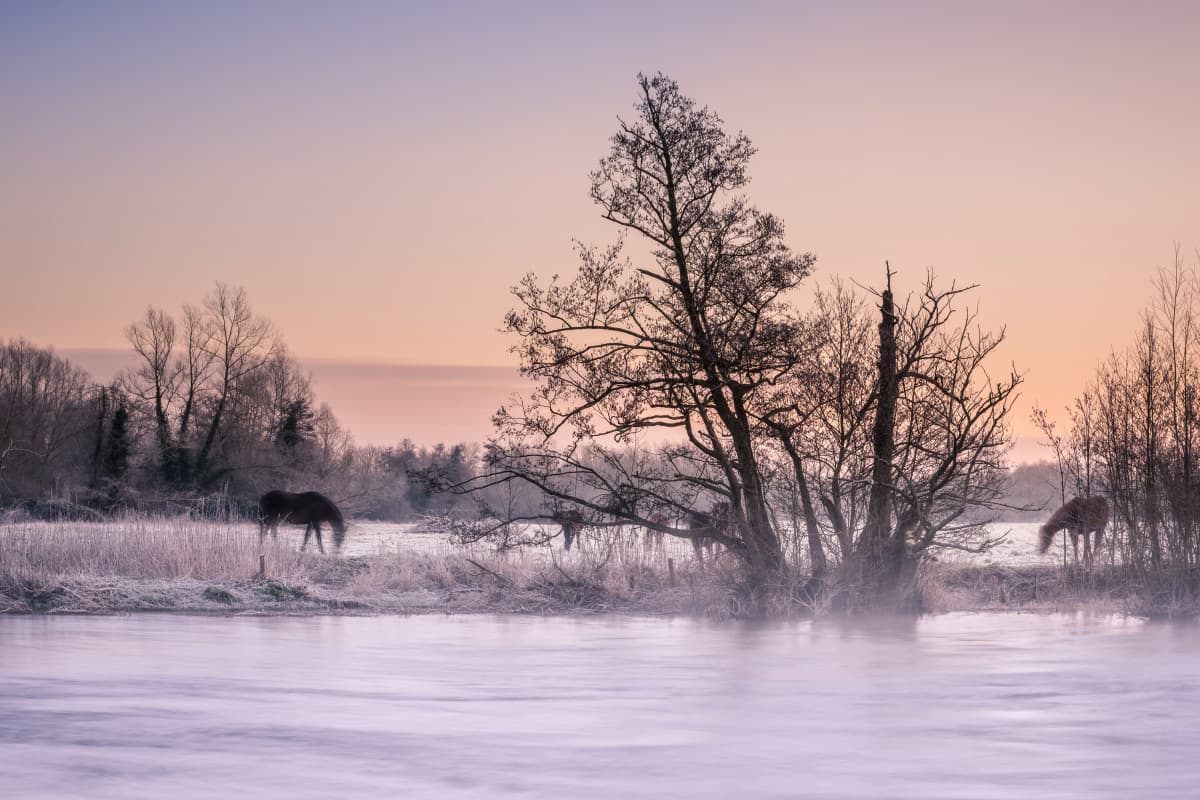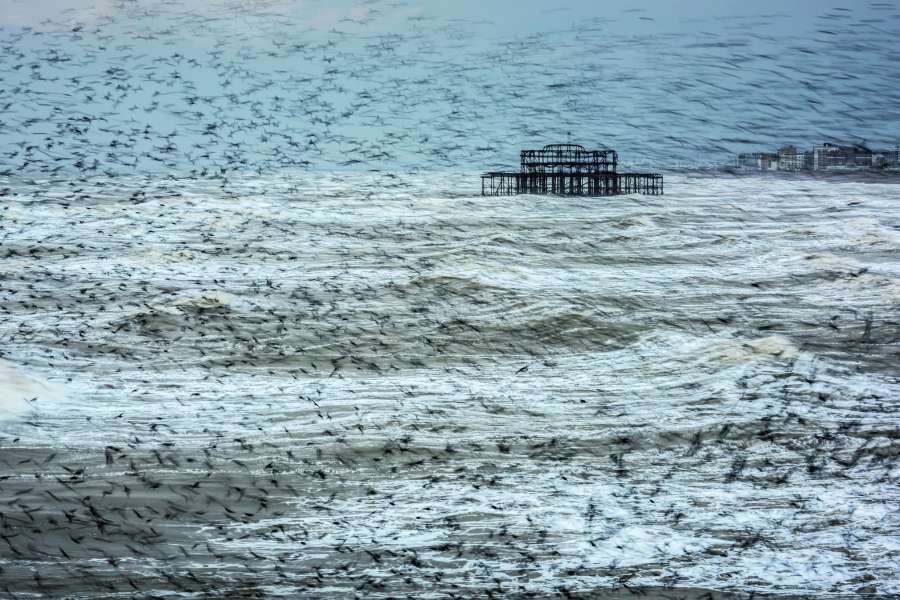My winning Take A View Landscape Photographer of the Year image is an event that I’ve wanted to witness for several years – the starling murmuration on Brighton beach (above). I travelled there last year with the intention of seeing it, but didn’t come away with much. Suffice to say, this year I was more prepared. I also took my parents with me because they hadn’t seen the murmurations before.
The first thing that struck me as we stood on Brighton’s East Pier was the initial feeling of amazement as these birds flew around us – it’s a very 3D experience. One minute the birds are whooshing over your head and then a split second later they’re whipping around in front of you.
To be honest, the light wasn’t brilliant, not exactly ‘golden hour’, but it did offer an ethereal silver-purple quality. It was also incredibly windy, which gave the waves some real energy. It created a turbulent and visually striking mix of sand and foam. I knew I wanted to take a shot that really captured that sense of movement.
Luckily, the birds were moving close to land, so I could look out and see them contrasted against the ruins of the West Pier in the distance. I knew this would give me a sense of the movement of the sea and birds against the stationary element of the pier.
As I was setting up, I picked what I considered to be the right focal length (95mm), framed the shot, and then waited for the birds to move between my lens and the shell of the West Pier.
This particular shot was taken on my Nikon D810 with a 70-200mm lens and an exposure of 1/10sec at f/11 and ISO 200. It was exciting taking these images because, as can often be the case, you have no idea what will appear on the back of your camera. I was playing with a variety of shutter speeds as I was shooting.
Experimenting with the shutter speeds gave me a series of different effects. This one struck me because you get a sense of movement in the waves and the birds. But the birds are also moving at different speeds in different parts of the frame.
The Brighton piers are photographic landmarks and there are thousands of photos of them, but I wanted to try to do something a little bit different.
Outdoor photographer
I’ve always described myself as an outdoor photographer, rather than boxing myself in with terms like ‘landscape’ or ‘wildlife’. I’ve been taking pictures since I was tiny and I’ve owned an SLR for more than 11 years, but it’s only during the last two or three years that things have really started to settle down.

Old Jetty. The old jetty posts on the shores of Derwent Water as the last rays of sunlight finally burst through the thick cloud. It almost appeared as though the summits of Grizedale Pike and Causy Pike were on fire.
I’ve worked out what I like doing and developed something approaching a visual style. That style finds me incorporating and encompassing the bigger picture of a scene, focusing on the area and the wildlife that inhabits it. It’s about producing a complete story of an area. Recently, I’ve purchased a macro lens so I can start exploring the world through new avenues.
Being outside is something I’m incredibly fond of. To pick up a camera and share these sights with people seems logical to me. I’m not a photographer who particularly goes out with a plan or an image in mind (although I sort of did that with my LPOTY image). I tend to feel my way around a location and react to weather conditions and changing light. It’s all about feeling what is appropriate to the scene in respect of the combination of lens, filters, and so on.

Newlands Gate. As the sun set over Catbells the colourful sky quickly cooled and cast beautiful blue tones over the scenes for the shores of Derwent Water.
In that sense I don’t have a ‘one size fits all’ method of producing photography, and I don’t have a way, necessarily, of ‘seeing’ things. I like to think that perhaps I see things a little differently to the average person because I’ve been shooting properly for more than ten years. I think now it’s a case of instinctively responding to the given elements of a location at a particular time.
Immerse yourself
If you’re just starting out, I can’t emphasise enough how important it is to immerse yourself in the work of others. I’m lucky to have an extensive collection of photography books. It’s about seeing and being aware of what other people are doing, and then being influenced by understanding what you like, what you don’t like, what works well and what doesn’t. Looking at the work of others gives you a feel for locations and areas. Then you can focus on things like colours, approaches to common scenes under varying lighting conditions, and so on.

Kittiwake on Dark Rocks. A Kittiwake (Rissa tridactyla) perched on a ledge of dark rocks on the Farne Islands.
You can then take all of that and throw it into a melting pot with your own views and ideas about how the world works. That’s perhaps my biggest piece of advice – look at what other people are doing. Don’t copy, but allow yourself to be influenced, because that helps you to define what makes you a photographer. That’s what you lack when you start – the visual vocabulary. You go out and take pictures of everything because it’s exciting. Studying allows you to build your own personal vision – it gives you fuel.

Mannlichen Morning. The morning mist breaking up over the cliffs and peaks of Mannlichen in the Jungfrau.
I recently joined the Wokingham and East Berkshire Camera Club. We have competitions and it shows how subjective photography is. The thing I’ve learned is that even if you think the judges will hate your images, you need to have the confidence to have a go. You take images for yourself first and foremost, and if other people like them that’s great.
The camera club I’m with are a wonderful group of people. They’re completely the opposite of anything I’ve ever read about camera clubs. There’s a bit of Nikon and Canon banter, but it’s done in a playful way. It’s a small club, just 70 or so members, and they’ve been very welcoming.I got a bit of stick because I came in as a new starter and won the overall print photographer of the year award. That was a bit of a shock. I wasn’t expecting it at all. So they’ve all been taking the mick out of me relentlessly because of it.

Horse at Dawn. Horses grazing at the waters edge on a a frosty morning on the Kennet and Avon canal.
Camera and lenses
Quite simply, the Nikon D810 is the best camera I’ve ever owned. I used to have a Nikon D700, which was great, but then I bought a D800 and I hated it. I can’t tell you why, but it was to the point that I’m almost convinced I had a duff model. It just felt wrong. Everything about it didn’t work. It won’t surprise you to hear that I traded it in as quickly as I could and that was when I got my hands on the Nikon D810. It’s a camera that I’m very ‘harmonious’ with, if that makes sense. I also have a 24-70mm and a 70-200mm lens.

Referring back to my winning image, because of the frame I wanted, the 70mm wasn’t quite enough. The West Pier was quite distant – I wanted to zoom in but also keep it wide enough to capture the spectacle of the murmuration. The murmuration, as anyone who’s seen it will tell you, feels huge. That was why I had to use the 70-200mm. And everyone knows it really is a wonderful lens.
 Matthew Cattell is an outdoor photographer whose mission is to promote an appreciation of the natural world by exploring and capturing a range of images, from panoramic vistas to the details and behaviour of the wildlife on our doorstep. He has been shortlisted for a handful of awards and this year was crowned the Take a view Landscape Photographer of the Year. To see more of his work visit www.matthewcattellphotography.com
Matthew Cattell is an outdoor photographer whose mission is to promote an appreciation of the natural world by exploring and capturing a range of images, from panoramic vistas to the details and behaviour of the wildlife on our doorstep. He has been shortlisted for a handful of awards and this year was crowned the Take a view Landscape Photographer of the Year. To see more of his work visit www.matthewcattellphotography.com








